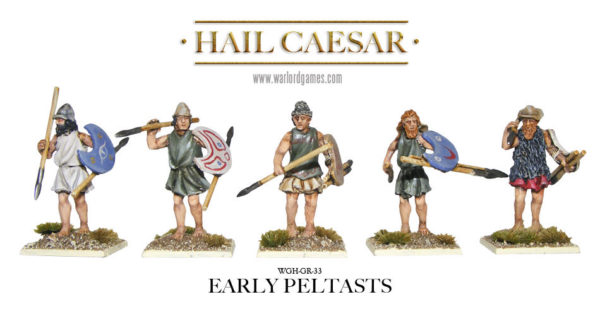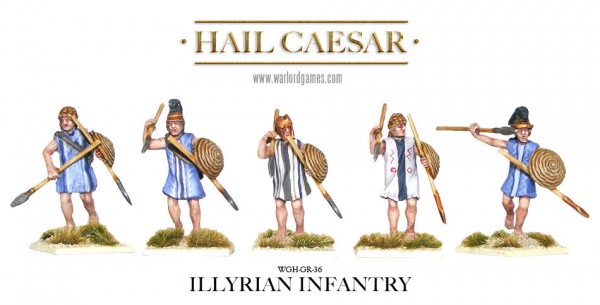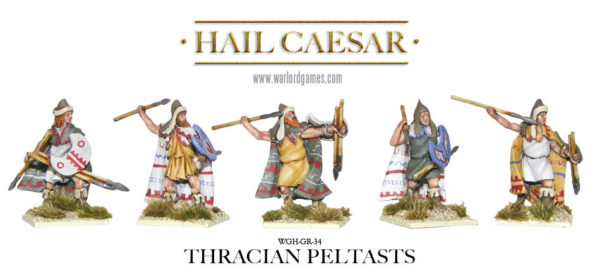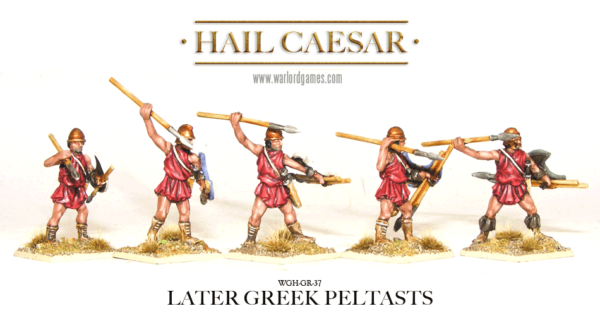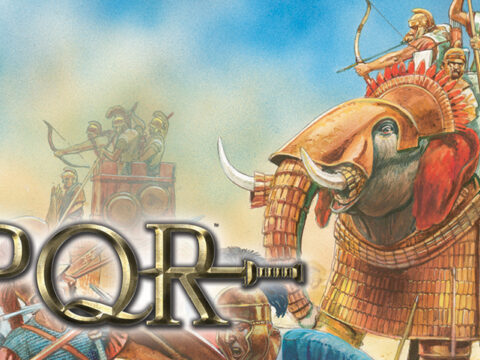‘To begin with the armament of the infantry is assigned to three types
if we make the most basic distinction. These three types are on the
basis of their equipment: the hoplite, the light-armed and the peltasts.
… The Peltasts are more lightly armed that the hoplites, their shield is
both smaller and lighter than that of the latter, and their javelins are
lighters than the spears or sarissas of the hoplites, but they are heavier
than the javelins of the light-armed.’
Arrian Tactica
Light troops played very little part in Greek warfare during the late 6th and early 5th centuries. Battles were decided by the clash of heavily armed Hoplites. Such light troops as existed comprised armed-servants and sundry low-lifes who would brawl with their opposite numbers before making way for the battle proper to begin. These skirmishing troops might have been lucky enough to have a few javelins to throw – many would just throw stones and – no doubt – some fairly spicy Greek.
Light troops were much more a feature of warfare amongst the Thracian and Illyrian tribes to the mountainous north – and probably of the less wealthy, less densely populated mountainous regions of Greece itself. Proper fighting light infantry were originally associated with Thrace and were referred to as Peltasts – after the small crescent shaped shield or ‘pelte’. Thracian Peltasts are shown on vase paintings wearing their distinctive caps and carrying the pelte as well as a number of javelins. These light infantry were certainly effective skirmishers, but were also capable of fighting in conjunction with cavalry or other missile-armed light infantry such as bowmen and slingers. Once the main battlelines engaged they would be ready to take part in the pursuit of the enemy, or perhaps to lend their weight to the fighting. Soon the term ‘Peltast’ was used to describe all light infantry of a similar type – often they were mercenaries or professional soldiers – and they became increasingly common during the Peloponnesian War and afterwards.
These models represent typical light infantry of the early fifth century BC – so they wear mostly civilian clothes and are very lightly equipped lacking helmets or even side arms. None-the-less they carry the pelte as well as a clutch of javelins. Troops like this could appear in almost any Greek army right through the Hellenistic age – representing the most poorly equipped of their type. In later years Peltasts were often highly professional troops, they would usually wear helmets and the crescent shaped shield might give way to a round shield. Even when the standard Peltast equipment became heavier in the later fourth and third centuries, the most poorly armed light infantry would still look much as their predecessors.
In Hail Caesar terms these models can be used to build units of either light infantry Peltasts or javelin armed skirmishers – and lacking side-arms as well as helmets they would be ideally suited to making units of distinctive skirmishers in armies that also contain more heavily armed Peltasts. It’s recommended that Peltasts are fielded as small sized units – that’s 8-12 models per unit going by the usual Hail Caesar suggested unit sizes (page 16 of the rule book).
TROOP VALUES |
||||||||
| Type | Combat | Morale Save | Stamina | Special | Points Value | |||
| Clash | Sustained | Short | Long | |||||
| Light infantry Peltasts with javelins – fielded as small unit. | 3 | 3 | 2 | 0 | 6+ | 4 | 13 per unit | |
| Infantry skirmishers armed with javelins and fielded as small unit. | 3 | 2 | 2 | 0 | 0 | 4 | 11 points per unit | |
These models could be used in the following Hail Caesar army lists from the Biblical and Classical Army Book. Lydian: skirmishers with javelins. Kyrenean Greek: skirmishers with javelins. Early Achaemenid Persians: skirmishers with javelins, representing Anatolians or Ionian Greeks. Hoplite Greek: light infantry Peltasts and skirmishers with javelins. Thracians: light infantry Peltasts and skirmishers with javelins. Later Hoplite Greek: skirmishers with javelins. Syracusan: skirmishers with javelins, Late Achaemenid Persians: skirmishers with javelins, representing Anatolians or Ionic Greeks. Alexandrian Macedonians: skirmishers with javelins. Alexander’s Successors: skirmishers with javelins. Hellenistic Greek: skirmishers with javelins. Late Macedonian: skirmishers with javelins. Pyrrhic: skirmishers with javelins, representing Greeks or Epirotes. These models could also be used to represent Illyrian skirmishers at a push – the only distinctly Greek feature being the broad-brimmed petasos hat sported by one of the models – basically a peasant’s hat of a type quite likely to find its way onto the head of agricultural labourers almost anywhere.
The pelte is a shield without a rim as Aristotle says
in his Constitution of the Thessalians writing that,
‘the pelte is a shield without a rim nor is it covered
with bronze and it is not cut round from oxhide but
of goatskin or the like.’
Aristotle

